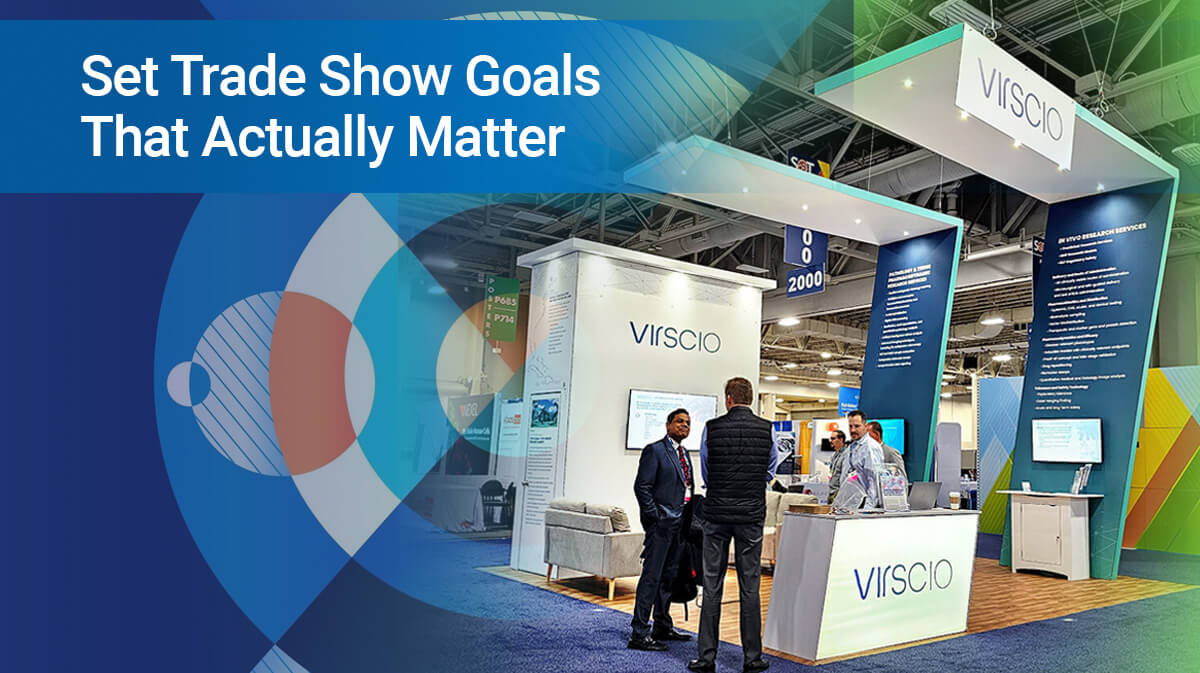
Setting Meaningful Trade Show Goals: A Guide for Success
Each business event you attend will represent an opportunity to create contact with your prospects as well as discussions with potential business partners. Having a positive exchange with your potential customers at a trade show can, in many cases, end in a purchase or in the loyalty of a new customer to your business.
As with any marketing campaign, the actions you take in preparing for your next trade show play a big role in achieving your goals. Setting goals for your brand is a crucial first step in preparing for a trade show. The right goals and the right guidelines influence design. It also helps your team stay motivated as it can measure the progress of your success.
However, setting specific goals to achieve is no easy task. Should we set haphazard goals or smaller but realistic goals?
1. Are you a rookie? Focus on profitability and not unrealistic goals
It is imperative to focus on amortizing your booth for the cost of your participation rather than just waiting for huge profits.
Therefore, set yourself smaller goals like covering your costs and leaving the returns on investment to future shows. Ideally, you close your first show without losses but with a gain in experience which you will use later for your future shows.
2. Develop an appropriate budget: the higher the costs, the higher your goals will be
The more you spend to attend a trade show, the more sales you’ll need to make to turn a profit. For this reason, we advise you to track down all unnecessary expenses. Try to translate an emotion on your trade show booth. The more you lower costs, the more likely you are that your booth will be profitable. This approach not only saves you money but also reduces the pressure on your staff to help them succeed.
3. Use your past experiences to set your goals
After participating in several trade shows, you will have an overview of how your team works in such an event environment. This allows you to gain a base of knowledge and experience for future events. So your goals will be based on real experience and not a prediction. By gradually increasing your goals, they will be more stable, realistic and above all achievable.
 4. Track your prospects and sales
4. Track your prospects and sales
One of the biggest mistakes in trade show planning is not following all of the sales leads that your team planned at the event. Without accurate monitoring, it would be impossible for you to assess your performance and the achievement of your goals hour by hour.
Sometimes, one should not avoid a lead especially when it can prove to be profitable. At a trade show, all avenues are good to explore. To ensure the management of your results and the follow-up of your clients, we recommend that you use CMR software during the event.
5. Measure your returns on investment over the long term, not after exposure
One of the faults of measuring the success of a trade show and evaluating the return on investment is to look immediately after the show at the profits. But it’s better to wait for weeks or even months later to measure the effect on sales. It is therefore extremely important to wait before evaluating the effects of sales. You will surely be able to find a prospect in your real customers a year later.
6. Compare your results with those of the previous year
Finally, after several years of attending trade shows, you can calculate an approximate value for converting prospects to customers for your future events. With this data, it is possible to create metrics such as Customer Life Value, profitability and sales performance.
But remember: predictive data is not perfect and rare is that which gives you an accurate picture of the results you will achieve in the end. They are however very useful in determining your ROI’s. This way you will know the value of your future trade shows.
Conclusion:
Trade fair goals must be set in a very early planning phase. Only when the goals are set will the necessary measures become recognizable, which must be taken to achieve the goals. Experience often shows that trade fair objectives and trade fair concepts correspond little or not at all to one another.
In this context, the importance of the trade show rental booth must not be forgotten. It must meet at least the following criteria:
- Your rental booth is the company’s calling card
- Your booth display must convey a clear and understandable message
- Your trade show booth makes the benefits visible to the visitor
- Your booth rental must be designed in accordance with the perception of visitors from the outside in
- Your rental booth must attract the attention of visitors
- Your trade show booth must create contact options
- Your booth rental must enable discussions in a pleasant, undisturbed setting


